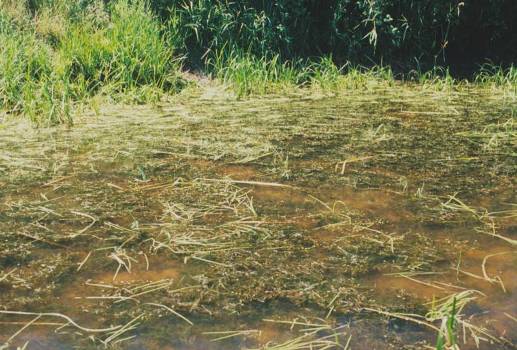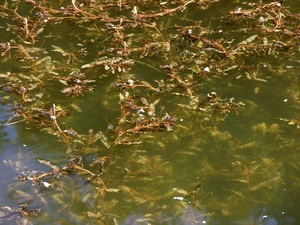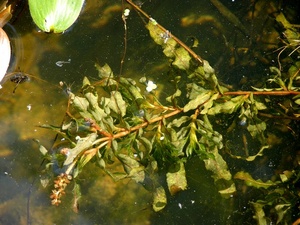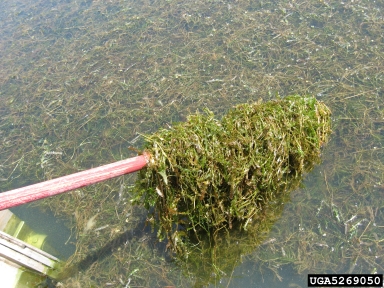Home is where the curly leaf pondweed invades...
 Curly Leaf Pondweed has a wide tolerance for a variety of
ecological factors. It's
typically found in alkaline and nutrient-rich environments.
It prefers to root in soft substrate at shallower depths,
growing best at 1 to 2 feet of water. It is tolerant of low
light levels and low water temperatures. Although P.
Crispus grows better in fresh water, it CAN grow in
salt water as well.
Curly Leaf Pondweed has a wide tolerance for a variety of
ecological factors. It's
typically found in alkaline and nutrient-rich environments.
It prefers to root in soft substrate at shallower depths,
growing best at 1 to 2 feet of water. It is tolerant of low
light levels and low water temperatures. Although P.
Crispus grows better in fresh water, it CAN grow in
salt water as well.
All of these tolerances allow Curly Leaf Pondweed to
flourish and survive in variable locations. In

 fact, this
submerged macrophyte is actually an invasive species to the
United States and has affected lake recreation, natural
beauty, drainage and irrigation, fishing, and boating
navigation issues throughout much of the country!
In many locations, this plant has destroyed natural
vegetation and upset important ecosystems.
fact, this
submerged macrophyte is actually an invasive species to the
United States and has affected lake recreation, natural
beauty, drainage and irrigation, fishing, and boating
navigation issues throughout much of the country!
In many locations, this plant has destroyed natural
vegetation and upset important ecosystems.

Originally, Curly Leaf Pondweed lived in exotic locations like Eurasia, Australia, and African countries such as Egypt (where it probably enjoyed a lovely view of the pyramids, pictured to the right). In the 1800's, American hobbyists began to use P. crispus as an aquarium plant; this unleashed the terrifying spread of curly leaf pondweed throughout the nation!
 Curly Leaf Pondweed rapidly spread through the United States as an invasive species. Although this
pondweed is responsible for the destruction of many
submerged plant communities, it has also become an
important primary producer in many aquatic ecosystems
throughout the U
Curly Leaf Pondweed rapidly spread through the United States as an invasive species. Although this
pondweed is responsible for the destruction of many
submerged plant communities, it has also become an
important primary producer in many aquatic ecosystems
throughout the United States.
The map to the right shows the distribution of curly leaf pondweed in the United States. Very few states are not affected by this species of pondweed!
How has curly leafed pondweed adapted to aid its journey
for stateside domination? Continue to
ADAPTATIONS!